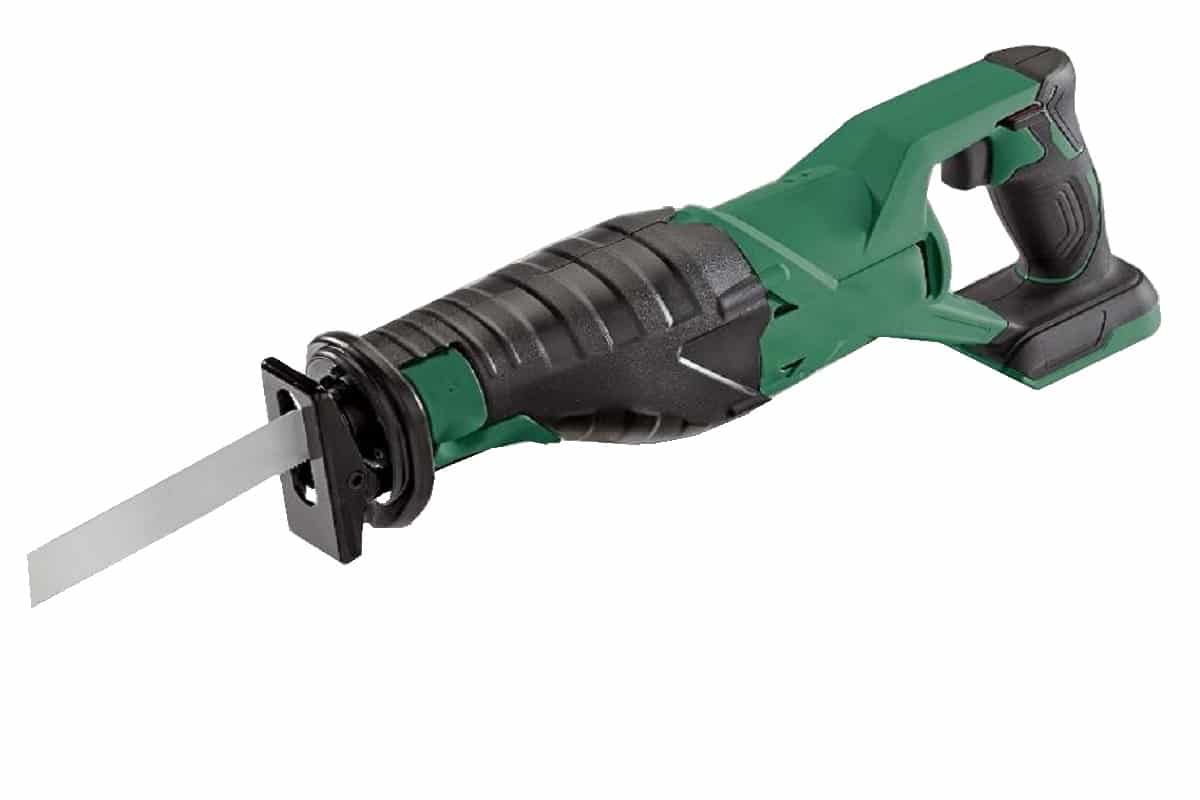Reciprocating saws come in several sizes, each one fits the type of cutting tasks and environments they are used in. Read further to learn more
Reciprocating Saw Sizes
Reciprocating saw sizes are correlated to the type of saw they are. There are a range of saw sizes, that correspond to the saw type. Reciprocating saws are made to be hand held, either with one or two hands, so they are not going to be extremely large and heavy. Reciprocating saws are made to be carried by a single person to be used on the go when needed to quickly get the job done.
For more, see our post What Type Of Reciprocating Saw Do I Need
Sizes of the reciprocating saws match the type they are and include:
- Mini
- Small / medium
- Large / industrial
- Pneumatic

Reciprocating Saw Dimensions
Reciprocating saws, due to their shape, share a common set of dimensions. The only visible difference is between a pneumatic versus a medium standard reciprocating saw. Mini saws are also noticeably smaller and shaped differently in the handle and blade regions than industrial strength reciprocating saws.
Reciprocating saw dimensions are generally:
| Reciprocating Saw Type | Length | Width | Height | Weight |
| Mini | 13 in. | 3 1/4 in. | 7 in. | 4-5 lbs. |
| Small / Medium | 16-17 in. | 3 – 4 in. | 6 in. | 7 lbs. |
| Large / Industrial | 17-18 in. | 3.5 in. | 6-7 in. | 7-8 lbs. |
| Pneumatic | 10-11 in. | 2-3 in. | 3-4 in. | 2 lbs. |
Reciprocating Saw Weight
The weight of a reciprocating saw matters because a heavier saw will cause the operator to get tired faster. However, heavier saws are often more powerful and the extra heft can help stabilize it and apply pressure while cutting. Lighter saws tend to be smaller and easier to maneuver in tight spaces, as well as being easier to carry.
Also, the lighter the saw, the easier it is to handle all day without causing the user to get too tired. This is why many people choose smaller sized reciprocating saws for DIY home improvement cutting tasks.
Reciprocating saws weigh between 4 and 8 pounds, and this depends on the type.
So, Which Reciprocating Saw Size Is Best?
The best size reciprocating saw depends on what you intend to cut. Larger reciprocating saws are best for heavy duty cutting jobs in industrial settings. Smaller and mini reciprocating saws are good for DIY home cutting tasks and require less strength and endurance to operate.
Here are a list of general tasks associated with each reciprocating saw size / type:
- Mini – home DIY cutting tasks, electrical work, large craft projects, occasional use, all-day use.
- Small / medium – home improvement, carpentry, construction, demolition, shopwork.
- Large / industrial – heavy duty industrial cutting, construction, demolition, debris removal, professional use.
- Pneumatic – professional and industrial cutting, automotive, machine shop, farms and utilities.
In Closing
The size of the reciprocating saw is tied directly to the type of cutting tasks and preferences of the user. Regardless of which size you choose, always aim for safety when operating one.
